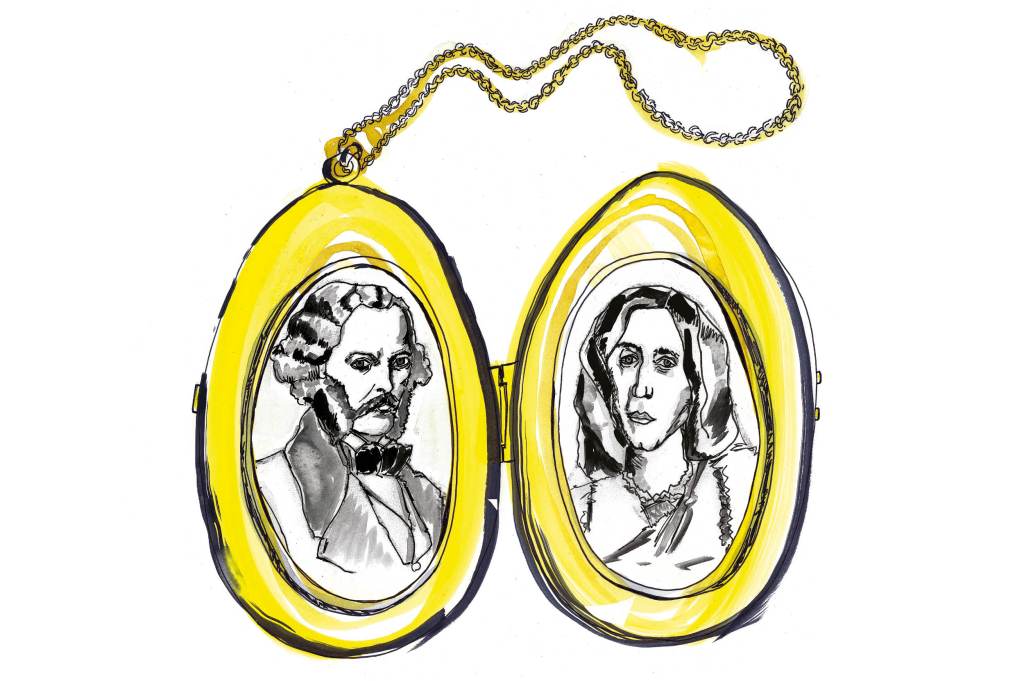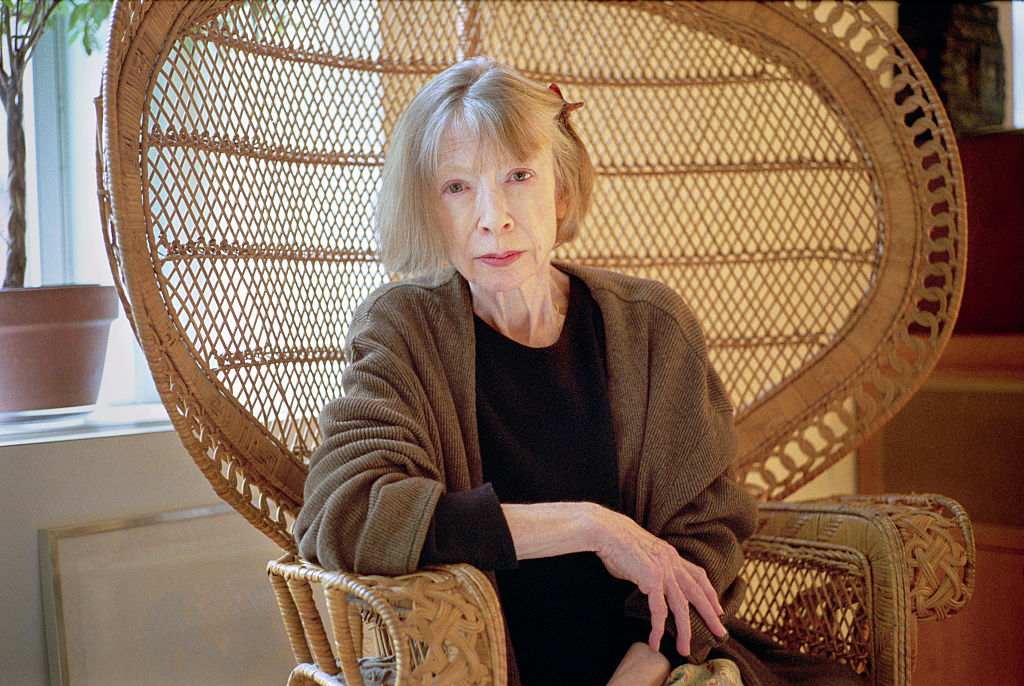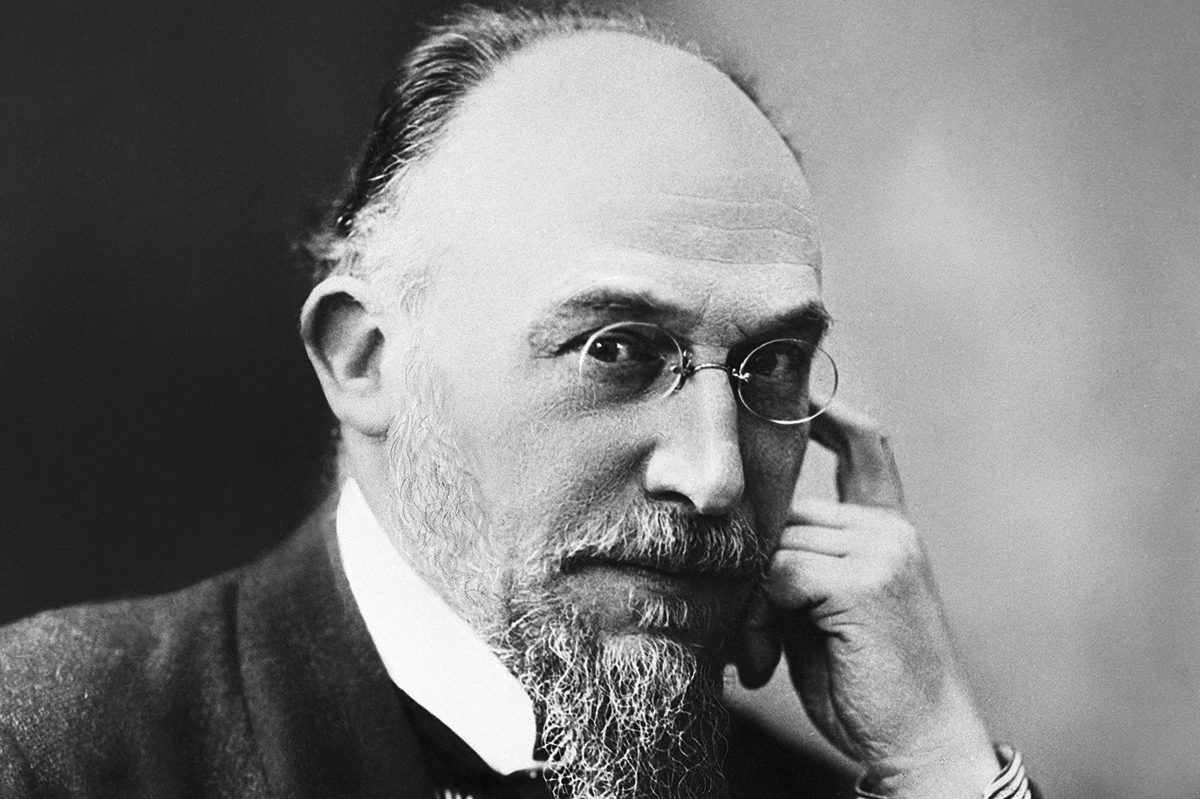What to call her? The question troubled George Eliot, and challenges Clare Carlisle, her latest biographer. Even this book’s indexer plays along, providing more than one entry for its shapeshifting but steadfast subject. The Marriage Question shows us a woman fragmented, attempting to understand in her various existences how — and if — personal freedom can be achieved when your life is bound to another.
Mary Ann (or Anne) Evans was born in Warwickshire, in the West Midlands of England, in 1819. On moving to London in 1850, hoping to make her living as a writer, she became Marian Evans. In her thirties she met and fell in love with the philosopher and critic George Henry Lewes, who — pitted with smallpox scars but energetic and humorous — was already married with children. The expense and scandal of divorce was unthinkable, but by 1854 Eliot and Lewes had decided to live together as husband and wife, maintaining their relationship despite the gossip and censure of society. She insisted on being referred to as Marian Lewes, although her new love called her Polly or, on occasion, Madonna. Lewes’s four sons, holding the word “mother” at one remove, wrote to her in German as “mutter.”
Married all but legally, she began to write fiction under the name George Eliot, beginning tentatively with Scenes of Clerical Life in 1857 and then finding success with her first full-length novel, Adam Bede. After that came undeniable greatness: The Mill on The Floss, Silas Marner, above all, Middlemarch. Few of Eliot’s biographers waste time on the 400-page poem The Spanish Gypsy or her most political book, Felix Holt, but Carlisle lingers over what might be called the “problem” novels, Romola and Daniel Deronda.
George Eliot’s identity soon became public knowledge, the curtain pulled back to reveal Marian Evans — but who, by then, was that? “That individual,” wrote Lewes to a friend, “is extinct, rolled up, mashed, absorbed in the Lewesian magnificence!” Egotism aside, his is a striking vocabulary, half-violent, half-culinary, describing a pulping of selfhood (Dickens uses “mashed” for descriptions of mud and murder, as well as potatoes). The crux of Eliot’s “marriage question” is that immersion in another, to the point of self-obliteration, strengthened and defined her own identity. With Lewes she led not a double but a single life in which two souls were merged — or mashed — in what she called a “shared solitude.”
Carlisle goes so far as to call the relationship a “crisis from which [Eliot] never recovered”; certainly the loss of social status, and the censoriousness of friends and family, caused her considerable pain. But Eliot described life with Lewes as “the gravest joy.” Joy, for her, was a serious matter. “I think it is impossible,” she wrote, “for two human beings to be more happy in each other.” (Did Virginia Woolf read this letter, and catch its echo in her suicide note? “I don’t think two people could have been happier than we have been.”) Eliot’s use of “in” is telling: she and Lewes lived not with but within one another. Her pseudonym took on his forename. When he died, in 1878, she revised for publication his final work, and so published sentences of her own as George Henry Lewes. The absorption had become total. Carlisle brilliantly notices how, in the diary entries made from the depths of a widow’s grief, Eliot dispensed with the pronoun “I” — “finished second reading,” “revised introduction” — a person unselved.
At sixty, she married again, or rather for the first time: to John Cross, an acolyte over twenty years younger, to whom she had once signed herself “Auntie.” Mary Ann Cross, as she now was, had a new nickname from a new partner: Beatrice, from Dante. The “I” returned to her diary. Her life as Mrs. Cross is passed over briefly here, though its mysteries still intrigue. Honeymooning with his wife in Venice, seven months before her death, Cross threw himself from a balcony into the Grand Canal. He survived to become the gatekeeper of his wife’s legacy, never explaining his attempted flight from his own marriage question.
Defined, and made herself, by the men she loved, Eliot is little like the twenty-first-century ideal of the free woman. Her marriage to Lewes was unconventional in its adherence to convention. He provided her with the life and love from which her novels sprang, but her considerable earnings went into his bank account and, protectiveness bleeding into control, he was not above opening her mail or denying her a holiday. Carlisle rightly refuses to wrench her into modern shapes, just as she refuses to admonish, gossip or judge. This study is nothing so modish or crude as How George Eliot Saved My Marriage; as Woolf said of Middlemarch, it is a book written for grown-up people. A professor of philosophy at King’s College London, Carlisle intertwines a chronological account of the relationship with literary analysis concentrating on Eliot’s deep knowledge of philosophy. These strands are then braided into a rumination on marriage; what it meant to Eliot, to her time and to ours.
Carlisle’s is a formidable distillation of material, quoting generously from letters in a narrative at once economical and spacious. Focusing all but exclusively on the quarter-century of Eliot’s life spent with Lewes, she can proceed with stimulating detail, chronicling their shared existence of travel, industry and sickliness. Carlisle’s Eliot is human and contradictory. She speaks, in the beautiful low voice that she shared with Dorothea Brooke of Middlemarch — a voice that, in combination with radiant intelligence, animated her large nose and crooked teeth into something not far from beauty. She lolls, correcting proofs with her legs hooked over the arm of a chair. She kisses, perhaps reluctantly, perhaps not, the young women who, at the peak of her fame, worshipped her with evidently sexual ardor. She bleeds, marking her menstrual cycle with asterisks in her diary.
She also, of course, writes. Here, Carlisle at once illumines and occludes. She is strong not only on what happens in Middlemarch but on what doesn’t, showing us a plot rich with shadow lives, might-have-beens, what-ifs. Her knowledge of Eliot’s knowledge provides an intellectual route map for the novels by charting the “towers of books” that went into their creation, and she valuably demonstrates that Eliot, translator of Spinoza and of David Strauss, was at the vanguard of European philosophical thought.
But just as Romola, set in fifteenth-century Florence, may be said to collapse under the weight of its own learning, something similar happens here. Characters in fiction become walking, talking philosophical arguments, squeezed into shapes: “When Romola de’ Bardi marries handsome, hedonistic Tito Melema she plunges into the condition dramatized in Plato’s cave.” (Strangely, given the book’s focus, the analysis of Romola pays scant attention to Tito’s two wives, the result of a mock “marriage” to a fourteen-year-old with whom he fathers children raised by the heroine as her own.) The sisters of Middlemarch, Dorothea and Celia Brooke, are cast as Aristotle and Plato. I once wrote a bad student essay casting them as John Ruskin and Walter Pater. The point is that they are Dorothea and Celia Brooke, given contradictory and breathing life by Eliot’s novelistic rather than her philosophical genius.
And so to the book’s eponymous and overarching concern: the marriage question. Here, and inexplicably, Carlisle descends into muddy platitude, never managing to formulate what this question might be, even as she strives for an answer. Her chief conclusion is taken from Spinoza, as filtered through Eliot: “Being free does not mean being autonomous or self-sufficient.” But she clutters her chapters with her own thoughts on marriage that wither in the glare of her subject’s penetrating eloquence. Fridge-magnet aphorisms read like Eliot parody: “At times marriages, like nations and churches, survive by policing their borders.” “Like a plant, a long-term relationship has its phases of development.” “The world is full of couples, like it is full of houses.” Late on, Carlisle riskily decides to introduce some unexpected figures, from Princess Diana to her editor. “When he reaches [Eliot’s decision to marry Cross], my editor is shocked.” More disquieting are the frequent faux-profundities: “art stretches across human history,” or “religion, we know, is far from peaceful,” or “all creatures… are shaped by their surroundings.”
Eliot’s truths are more than clichéd epigram or extended simile. She didn’t write in themes or even in thoughts. Whether inspired by Hegel or Plato, her philosophical explorations are digested by the enzyme of fiction — maybe more so than Carlisle allows. The stuff of her writing is words, what in Adam Bede she calls the “drop of ink at the end of my pen.” Words were her chosen means of expressing her “keen vision and feeling for all that is ordinary in human life,” which the narrator of Middlemarch describes as a fatally unsustainable surfeit of impression, likened to “hearing the grass grow and the squirrel’s heart beat.” Somewhere along the way in Carlisle’s often admirable book, Eliot’s keen and specific vision is blurred by the high-flown. This is a macroscopic study of one who specializes in microscopy.
Eliot’s most disturbing fictional marriage is in Daniel Deronda. Carlisle’s virtuosic account of this last, proto-Zionist, novel’s “kabbalistic composition” shows us Eliot learning Hebrew with the scholar Emanuel Deutsch; reading the philosopher Auguste Comte; making notes on Jewish mysticism and reading lectures by the physicist John Tyndall. She mentions, too, a scene in which Eliot’s almost-heroine, Gwendolen Harleth, breakfasts with a husband she neither likes nor loves. Gwendolen is eating prawns, which Carlisle sees as evidence of an “invisible flow of money from distant colonies.” (She does not go the whole hog and record Eliot’s pleasure on hearing that children’s books by her friend Cara Bray had reached India: “I enjoy thinking that the little darkies in Hindustan will be the better for the work of your dear fair head.”)
But you will not find the moment when Gwendolen picks up a prawn and thinks the “boiled ingenuousness of its eyes” entirely preferable to the dead-eyed stare of her husband. Eliot’s novels are full of eyes. In Middlemarch both Casaubon and Dorothea are shortsighted; eyes or eyeglasses appear eleven times in Deronda’s opening chapter alone. She was intent upon eye-opening, urging her characters and readers to see better. Her most profound answer to the marriage question can be glimpsed in the eyes of that prawn, in life as on the page no bigger than a drop of ink.
This article was originally published in The Spectator’s October 2023 World edition.

























